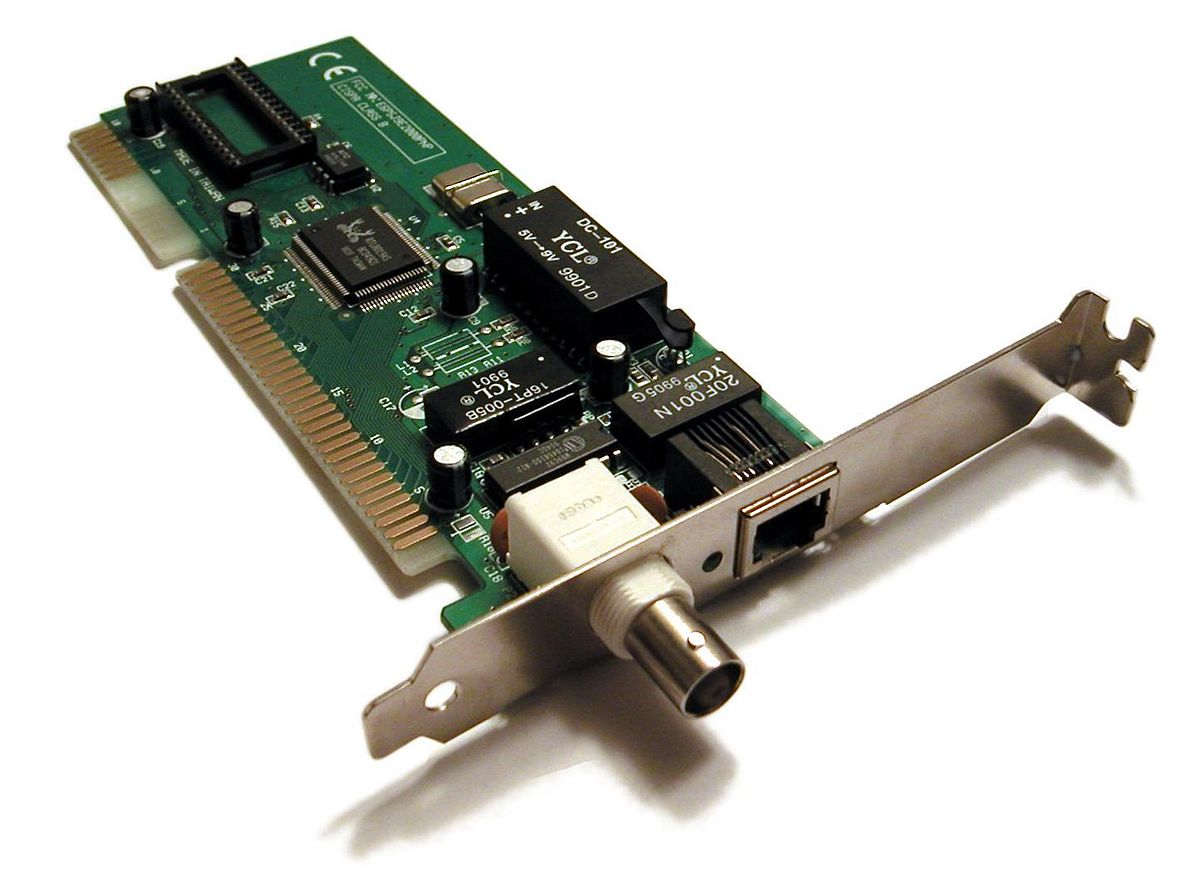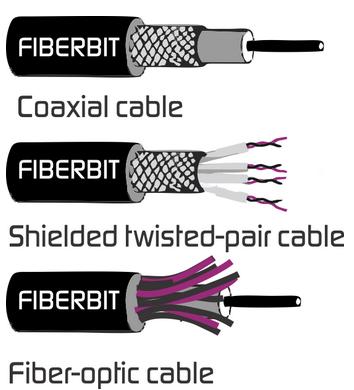
What is Networking?
Networking is the practice of linking multiple computing devices together in order to share resources. These resources can be printers, CDs, files, or even electronic communications such as e-mails and instant messages. These network can be created using several different methods, such as cables, telephone lines, satellites, radio waves, and infrared beams. Without the ability to network, businesses, government agencies, and schools would be unable to operate as efficiently as they do today. The ability for an office or school to connect dozens of computers to a single printer is a seemingly simple, yet extremely useful capability.
Communication Media
Hub2
Hubs connect computers together in a star
topology network. Due to their design, they increase the chances for
collisions. Hubs operate in the physical layer of the OSI model and have no
intelligence. Hubs flood incoming packets to all ports all the time. For this
reason, if a network is connected using hubs, the chances of a collision
increases linearly with the number of computers (assuming equal bandwidth use).
Hubs pose a security risk since all packets are flooded to all ports all the
time. If a user has packet sniffing software, they can extract data from the
network and potentially decode it and use it. Hubs make it easy to
"spy" on users on the same LAN as you.

Repeater
A wireless repeater.
A repeater is an electronic device that
receives a signal and retransmits it at a higher level and/or higher power, or
onto the other side of an obstruction, so that the signal can cover longer
distances without degradation. Because repeaters work with the actual physical
signal, and do not attempt to interpret the data being transmitted, they operate
on the physical layer, the first layer of the OSI model. Repeaters are majorly
employed in long distance transmission to reduce the effect of attenuation. It
is important to note that repeaters do not amplify the original signal but
simply regenerate it.

Modem
Modem (from modulator-demodulator) is a device
that turns the digital 1s and 0s of a personal computer into sounds that can be
transmitted over the telephone lines of Plain Old Telephone Systems (POTS), and
once received on the other side, converts those sounds back into a form used by
a USB, Ethernet, serial, or network connection. Modems are generally classified
by the amount of data they can send in a given time, normally measured in bits
per second, or "bps".

NIC (Network Interface Card)[
Network Interface Card
A network interface card is a computer
hardware component designed to allow computers to communicate over a computer
network. It is both an OSI layer 1 (physical layer) and layer 2 (data link
layer) device, as it provides physical access to a networking medium and
provides a low-level addressing system through the use of MAC addresses. It
allows users to connect to each other either by using cables or wirelessly.
Most motherboards today come equipped with a network interface card in the form
of a controller, with the hardware built into the board itself, eliminating the
need for a standalone card.

Switch
Switches are often confused with alia bridges
because they also operate at the data link layer of the OSI model. Similar to a
hub, switches provide a central connection between two or more computers on a
network, but with some intelligence. They provide traffic control for packets;
rather than forwarding data to all the connected ports, a switch forwards data
only to the port on which the destination system is connected. They use a
database of MAC addresses to determine where computers are located and very
efficiently send packets only where they need to go. The database is created
dynamically as computers communicate on the network. The switch simply watches
the incoming packets and memorizes the MAC address and port a packet arrives
on. If a packet arrives with a destination computer that the switch does not
have an address for in its MAC address table, it will flood the packet out all
connected ports. A switch creates separate collision domains for each physical
connection. A switch will only create separate broadcast domains if separate
VLANs (Virtual Local Area Networks) are assigned to different ports on the
switch. Otherwise, a broadcast received on one port will be flooded out all
ports except the one it came in on.

Wireless access point
A wireless access point (WAP or AP) is a
device that allows wireless communication devices to connect to a wireless
network using Wi-Fi, Bluetooth or related standards. The WAP usually connects
to a wired network, and can relay data between the wireless devices (such as
computers or printers) and wired devices on the network.
A typical corporate use involves attaching
several WAPs to a wired network and then providing wireless access to the office
Local Area Network. Within the range of the WAPs, the wireless end user has a
full network connection with the benefit of mobility. In this instance, the WAP
functions as a gateway for clients to access the wired network.
A Hot Spot is a common public application of
WAPs, where wireless clients can connect to the Internet without regard for the
particular networks to which they have attached for the moment. The concept has
become common in large cities, where a combination of coffeehouses, libraries,
as well as privately owned open access points, allow clients to stay more or
less continuously connected to the Internet, while moving around. A collection
of connected Hot Spots can be referred to as a lily-pad network.
Home networks generally have only one WAP to
connect all the computers in a home. Most are wireless routers, meaning
converged devices that include a WAP, router, and often an Ethernet switch in
the same device. Many also converge a broadband modem. In places where most
homes have their own WAP within range of the neighbors' WAP, it's possible for
technically savvy people to turn off their encryption and set up a wireless
community network, creating an intra-city communication network without the
need of wired networ

Twisted pair cable
Twisted pair copper cable is still widely
used, due to its low cost and ease of installation. A twisted pair consists of
two insulated copper cables, twisted together to reduce electrical interference
between adjacent pairs of wires. This type of cable is still used in the
subscriber loop of the public telephone system (the connection between a
customer and the local telephone exchange), which can extend for several
kilometres without amplification. The subscriber loop is essentially an
analogue transmission line, although twisted pair cables are also be used in
computer networks to carry digital signals over short distances.
The bandwidth of twisted pair cable
depends on the diameter of wire used, and the length of the transmission line.
The type of cable currently used in local area networks has four pairs of
wires. Until recently, category 5 or category 5E cable has been used, but
category 6 is now used for most new installations. The main difference between
the various categories is in the data rate supported - category 6 cable will
support gigabit Ethernet. The main disadvantage of UTP cables in networks is
that, due to the relatively high degree of attenuation and a susceptibility to
electromagnetic interference, high speed digital signals can only be reliably
transmitted over cable runs of 100 metres or less.
Coaxial cable
A coaxial cable has a central copper wire
core, surrounded by an insulating (dielectric) material. Braided metal
shielding surrounds the dielectric and helps to absorb unwanted external
signals (noise), preventing it from interfering with the data signal travelling
along the core. A plastic sheath protects the cable from damage. A terminating
resistor is used at each end of the cable to prevent transmitted signals from
being reflected back down the cable. The following diagram illustrates the
basic construction of a coaxial cable.
Optical fibre
Optical fibres are thin, solid strands of
glass that transmit information as pulses of light. The fibre has a core of
high-purity glass, between 6μm and 50μm in diameter, down which the light
pulses travel. The core is encased in a covering layer made of a different type
of glass, usually about 125 μm in diameter, known as the cladding. An outer
plastic covering, the primary buffer, provides some protection, and takes the
overall diameter to about 250 μm. The structure of an optical fibre is shown
below.
